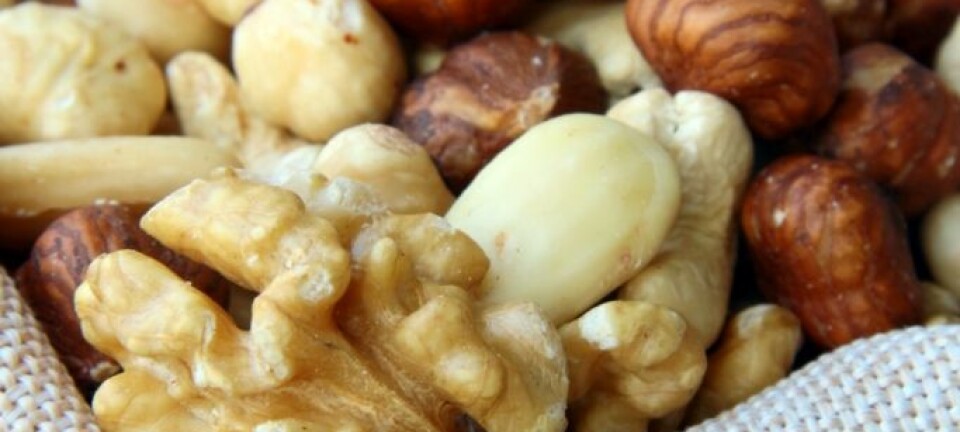This article was produced and financed by Norwegian School of Veterinary Science

Nut allergy can trigger allergic reactions to other food
Many foods can lead to allergic reactions, and worse: allergies for one type of food can trigger allergic reactions to a new type of food.
Denne artikkelen er over ti år gammel og kan inneholde utdatert informasjon.
Food allergies pose a serious and growing problem in the West. Many foods can lead to allergic reactions and this situation is further complicated by so-called cross-reactions, whereby an allergy to one particular food can trigger allergic reactions to another food.
There are no treatments available for food allergies, but the establishment of two mouse models can be used to develop and test new forms of treatment, for example vaccines.
Around 4-8 percent of children and 1-4 percent of adults in the West suffer from food allergy. The most common causes of food allergy are peanuts, nuts, soya, milk, fish, shellfish, flour and eggs, but a total of over 170 different foods have been found to result in allergic reactions.
In addition, there are the allergies that arise as a result of cross reactions to other types of food.

The only form of treatment is to avoid all consumption of the food that the person is allergic to. Allergenic substances that are hidden in processed foods therefore pose a particular problem for people allergic to foods.
Two mouse models
Nina E. Vinje’s doctoral research has led to the establishment of two mouse models for food allergy to the legumes lupin and Fenugreek. These models have been used to test whether legumes such as soya, peanuts, Fenugreek and lupin can trigger allergic reactions in mice that are already allergic to lupin and Fenugreek respectively.
It is important to establish good animal models for food allergies because the development of an allergic immune response depends on a complicated interaction between types of cells in several different organs.
"Hidden" allergens
Lupin and Fenugreek are examples of so-called “new” and “hidden” allergens which have been introduced to Norway, for instance in ready-made meals, over the last 10-15 years.
Lupin was introduced as a supplement to wheat flour in various bakery products because of its ability to promote good baking. Fenugreek is used as an ingredient in foods such as curry, chutney and spiced tea and is well known in Asian dishes.
Packaging often does not show whether Fenugreek is an ingredient, as the consumer information merely says “spices”. Both lupin and Fenugreek can lead to serious cross-reactions in patients with peanut allergy, in contrast to other legumes such as soya and peas.
This fact was discovered due to messages sent in to the Food Allergy Register and the discoveries contributed to the EU making it obligatory to mark lupin as an ingredient in foods.
Vaccine agains allargies
The established mice models can be used to try out new treatments, for example vaccines against food allergies. A vaccine must be tested on animals before it can be tested on humans, both in order to find out whether it works and to make sure that it does not cause serious side effects.
New foods that are to be released onto the market will also be able to be tested to see if they can cause allergies. Mice can be used for this purpose because their immune system is well charted and is relatively similar to that of humans.
This means that researchers can study the clinical, shock reactions associated with food allergy in mice in order to gain a greater understanding of the mechanisms that cause allergic reactions in humans.
Vinje’s doctoral project was carried out at the Norwegian Institute of Public Health and researchers and fellows at the Norwegian Veterinary Institute and the Norwegian School of Veterinary Science have been major collaborators.


































